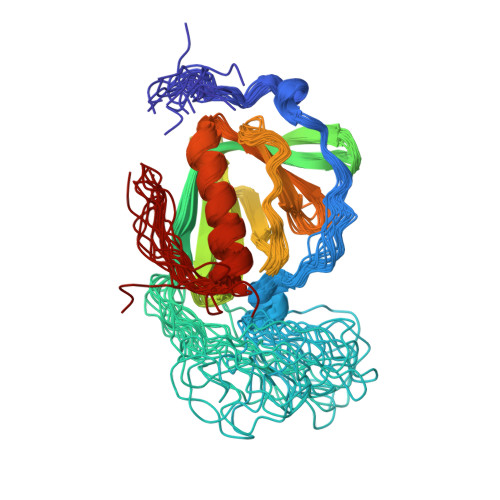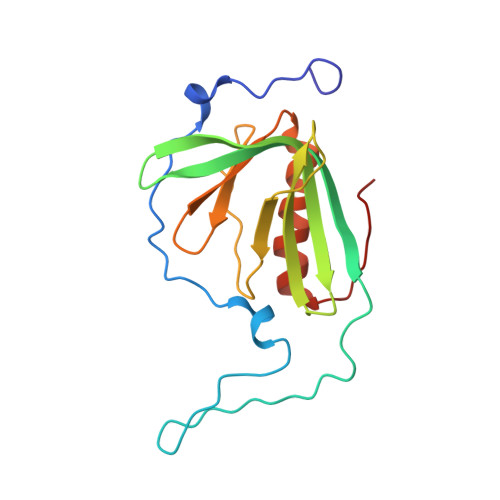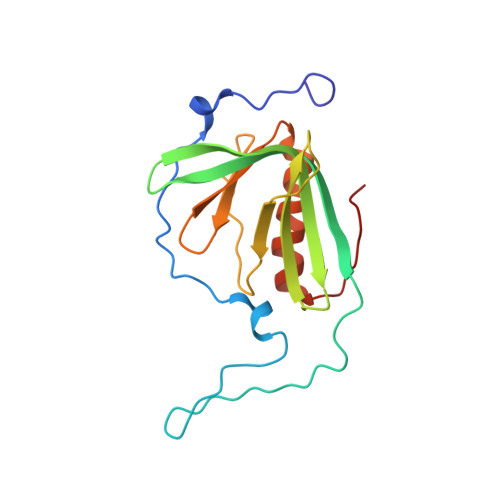Multiple WASP-interacting protein recognition motifs are required for a functional interaction with N-WASP.
Peterson, F.C., Deng, Q., Zettl, M., Prehoda, K.E., Lim, W.A., Way, M., Volkman, B.F.(2007) J Biological Chem 282: 8446-8453
- PubMed: 17229736
- DOI: https://doi.org/10.1074/jbc.M609902200
- Primary Citation of Related Structures:
2IFS - PubMed Abstract:
The WASP-interacting protein (WIP) targets WASP/WAVE proteins through a constitutive interaction with an amino-terminal enabled/VASP homology (EVH1) domain. Parallel investigations had previously identified two distinct N-WASP binding motifs corresponding to WIP residues 451-461 and 461-485, and we determined the structure of a complex between WIP-(461-485) and the N-WASP EVH1 domain (Volkman, B. F., Prehoda, K. E., Scott, J. A., Peterson, F. C., and Lim, W. A. (2002) Cell 111, 565-576). The present results show that, when combined, the WIP-(451-485) sequence wraps further around the EVH1 domain, extending the interface observed previously. Specific contacts with three WIP epitopes corresponded to regions of high sequence conservation in the verprolin family. A central polyproline motif occupied the canonical binding site but in a reversed orientation relative to other EVH1 complexes. This interaction was augmented in the amino- and carboxyl-terminal directions by additional hydrophobic contacts involving WIP residues 454-459 and 475-478, respectively. Disruption of any of the three WIP epitopes reduced N-WASP binding in cells, demonstrating a functional requirement for the entire binding domain, which is significantly longer than the polyproline motifs recognized by other EVH1 domains.
Organizational Affiliation:
Department of Biochemistry, Medical College of Wisconsin, Milwaukee, Wisconsin 53226, USA.
















